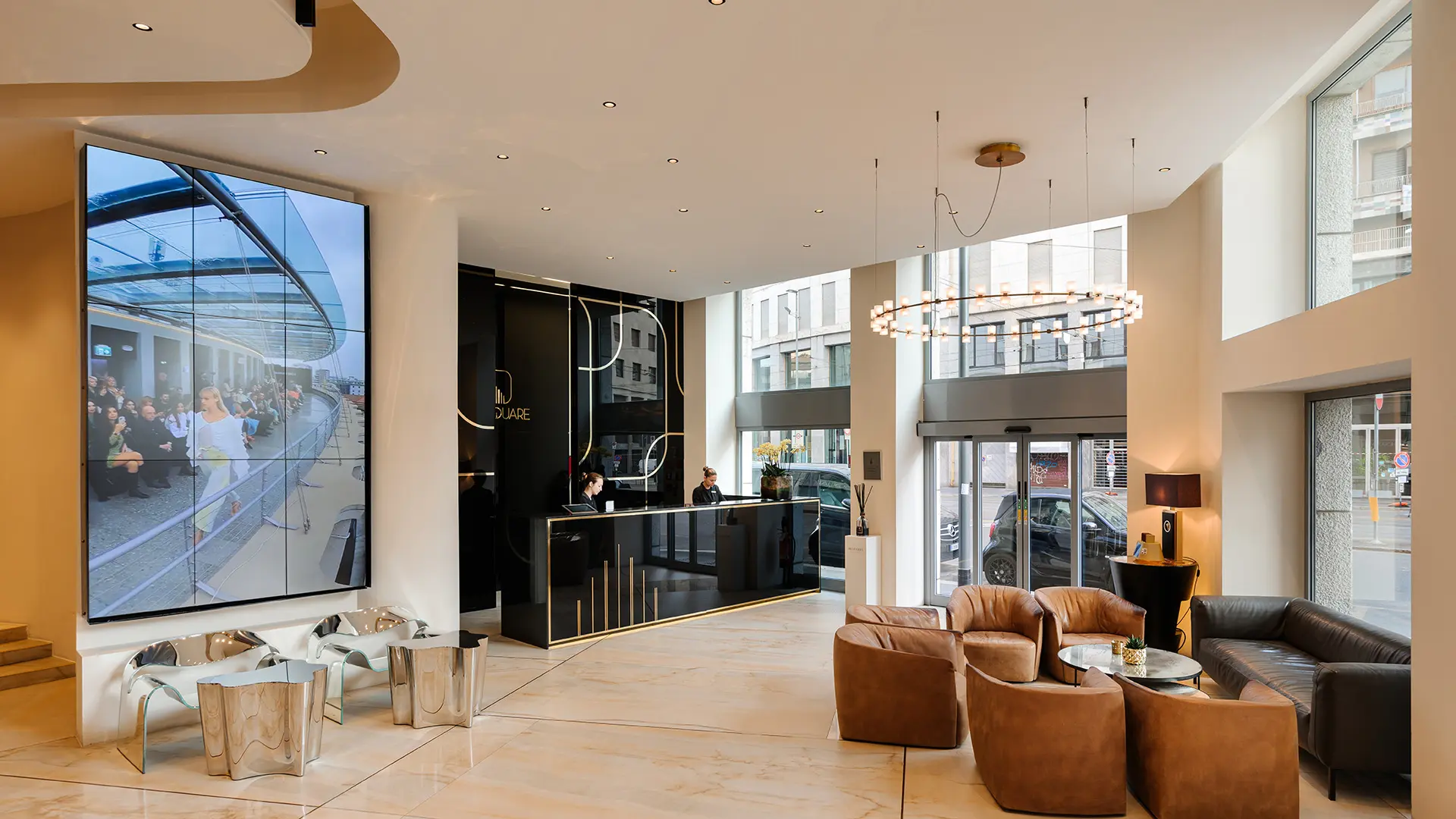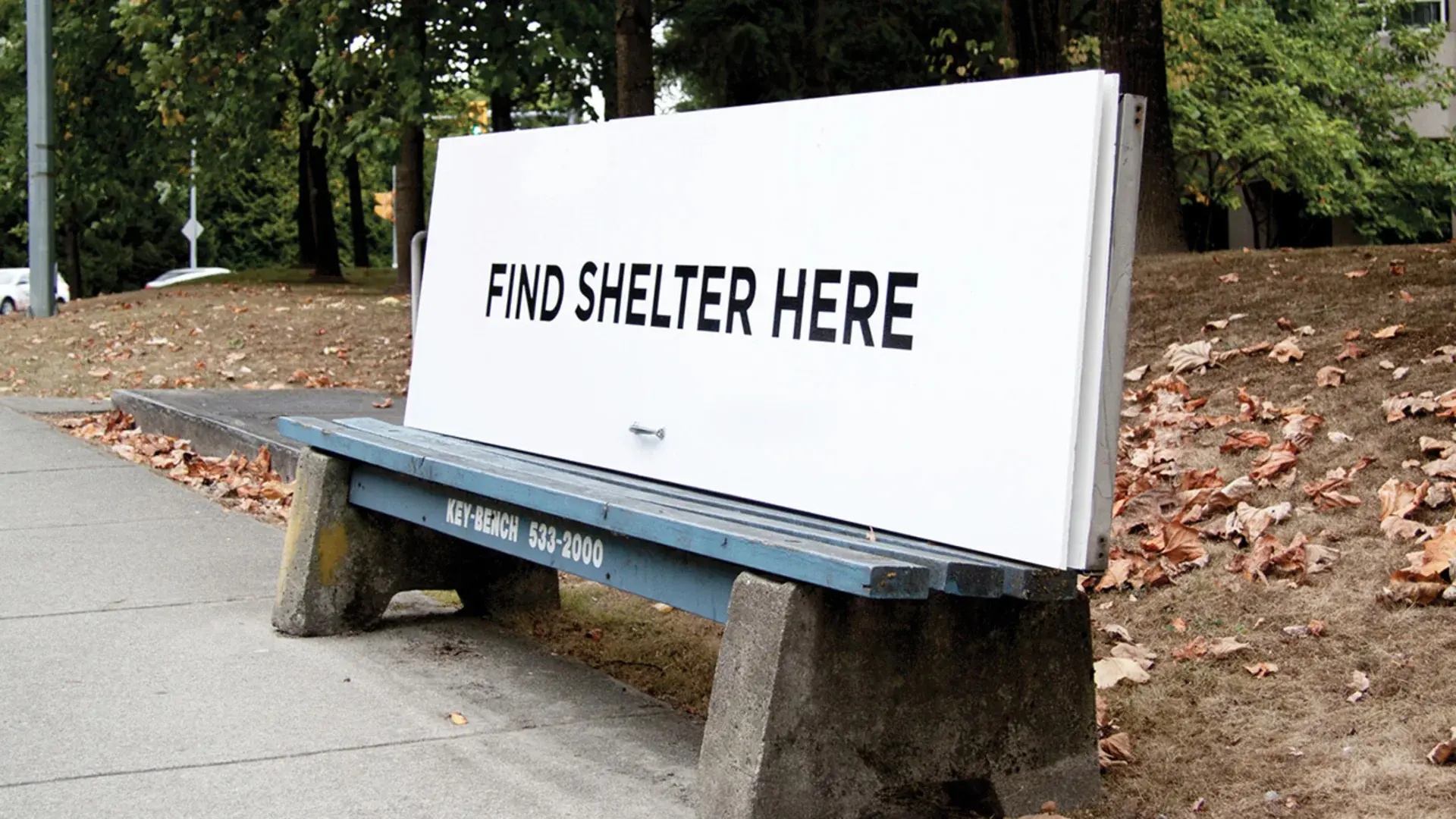From new interpretations of masters of the 20th century like Antoni Gaudí and Verner Panton, to radical research on living materials, to poignant reflections on the climate – especially in the runup to the Winter Olympics – as well as on our longing for objects, on sound, on the spaces we live in... here is a selection of exhibitions you cannot afford to miss, to keep your curiosity alive and your creative muscles in top shape
Rodolfo Dordoni: break the mould and alter perspectives
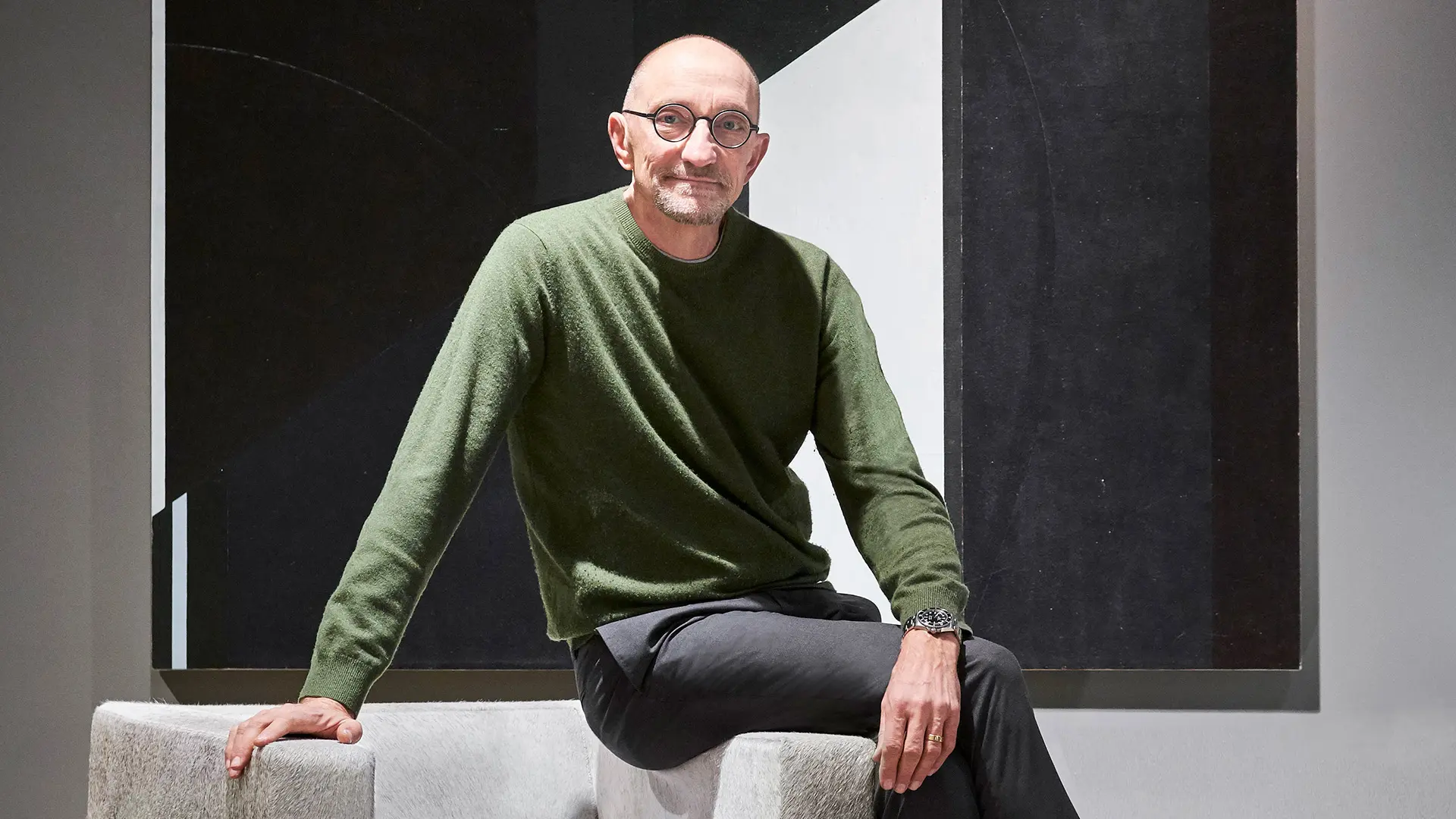
Rodolfo Dordoni with Suitcase armchair, Minotti. Photo courtesy
Reserved, rational, discreet, the art director Rodolfo Dordoni sees altering perspectives as the basis of his relationship with the companies he works with. Not to mention the awareness that small gestures can help smooth over reciprocal spikiness and differences. Because art direction also involves a meeting of minds and characters
Updated on 1 August 2023. In memory of the architect and designer Rodolfo Dordoni, who passed away on 1 August 2023, we republish this interview given in February last year. Born in Milan in 1954, with a degree in architecture from the Politecnico di Milano in 1979, Dordoni was one of the most important names in the history of contemporary Italian design. Over the course of his long career, in addition to designing furniture for numerous design companies, he was art director of Artemide, Cappellini, FontanaArte, Foscarini, Minotti and Roda.
While companies used to rely on this particular figure to identify strategies and a whole range of mutations that hadn’t been thought of before, their selection has become clearer cut and it’s also easier to find the interlocutors. At the time when narrating Italian design relied on relationships between industrialists and a handful of designers, few companies felt the need for art directors. Now they’ve become trainers, leaders that the companies need, not so much for recognising and identifying strategies as for passing them on and forging the way.
I’ve had both experiences. I was ill-prepared at first. After taking my degree in Architecture in 1979, I started out with Giulio Capellini, with whom I studied. He wanted to innovate the company and asked me to collaborate. I started - without realising it – being the art director and went on doing it for ten years.
I spent much of the early years with the company, which gave me a chance to find out what being a company really meant. This is where the difference between the role then and now really shows through. Formerly it was a building-up role and now it consists more of communicating. By working there, I learned about the company from the production to the communication side. When you were designing, the first thing you had to think about was feasibility: costs, catalogue, productive possibilities. They are assessments and considerations that I can’t say we don’t focus on now, but they don’t form the basis for a project. They did at the time.
The role has changed along with the changing approach to design and, especially, to communication. Before design courses existed, we taught ourselves. “Teams” of young professionals only came into being once design schools started springing up, then Italian companies started looking at foreign design too and opening themselves up to different perspectives and sensitivities. From then on the role has consisted of seeking and recognising qualities conducive to teamwork on ongoing projects. Now, when you embark on a new art direction adventure, you come up against different parameters, you realise who could work with you on a particular visionary path.
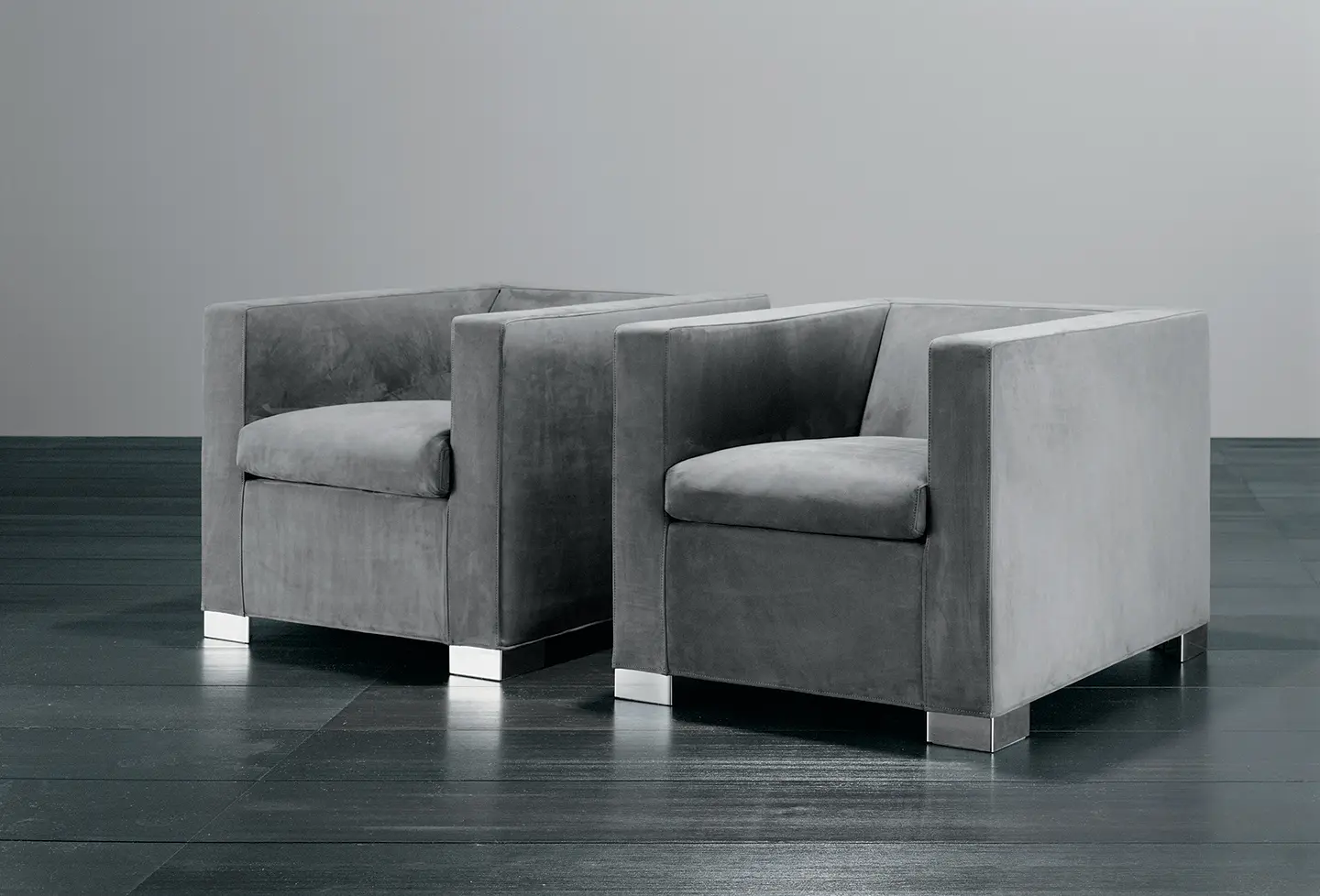
Suitcase armchair, Minotti, 1997. Photo courtesy
Art direction also involves a meeting of minds and characters. In my field I preserve the rational aspect – I like to think I’m very grounded! – which is a prerequisite for building relationships based on similarities and consistency. You can’t work in an environment in which a certain rational synergy has to be established if you have no affinities with people within the company … Sometimes you find yourself having to deal with protagonisms that are hard to balance in a project that involves several people.
You have to ensure – and this is what I believe the role of art director entails these days – that relations between the company and all the external and internal people involved in the project are harmonious. It’s not just the product that counts. For a rational person like me, if the proportions are wrong, there can’t be harmony: I don’t work with organic forms, I grew up with the square!
The great thing about art direction is that it’s become an established part of life. Unlike more sensational or interesting opportunities, the fact of being able to reason and work consistently changes the way you work. You don’t just think about a particular product, but about the factors that ensure it’s not a failure, diminishing the risks.
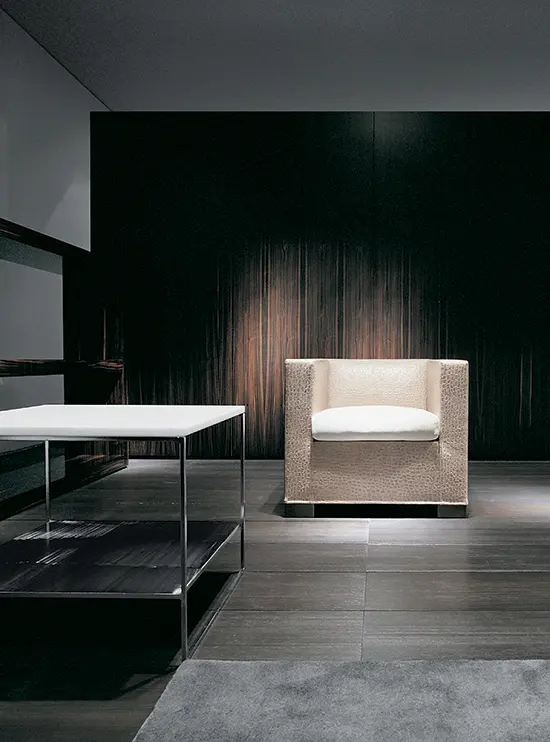
Suitcase armchair, Minotti, 1997. Photo courtesy
Minotti is my lengthiest collaboration (1887): I arrived with a collection consisting of three sofas and an armchair that was a cube, it looked like a trunk: Suitcase. That was the first approach, a proposal based on an object that shifted one’s perspective, creating the “it” for future projects. I was convinced they’d turn it down, instead of which they were curious about the slight provocation, which then laid the bases for the future development of the company. It was because of the change of perspective, in which the product was no longer just a sofa but a collection, a concept borrowed from the fashion world. So, not just an individual project, but a mood, an atmosphere providing the starting point for harnessing the context too. I created a micro-installation for that mini collection (it would now be called ‘capsule’), which made it stand out on the stand at the Salone … I wanted people to ‘read’ the difference between that set of products and the things that had already been prepared for the Salone itself. They understood that I would have liked to work for them and it was clear to me that they might have been interested in what we could do together. Which convinced each of us to embark on this collaboration.
Then there was another time when Elle Decor decided to dedicate its cover to my first collaboration with Minotti. I turned up with platinum-coloured hair: they couldn’t believe their eyes! You have to break the mould if you want to get under the surface. I wasn’t making an alternative statement, it was a spontaneous attempt to bring us closer together. I agreed ironically that I “was platinum” – as did they. That helped smooth over any spikiness and differences. Now we’re very much in tune with each other.
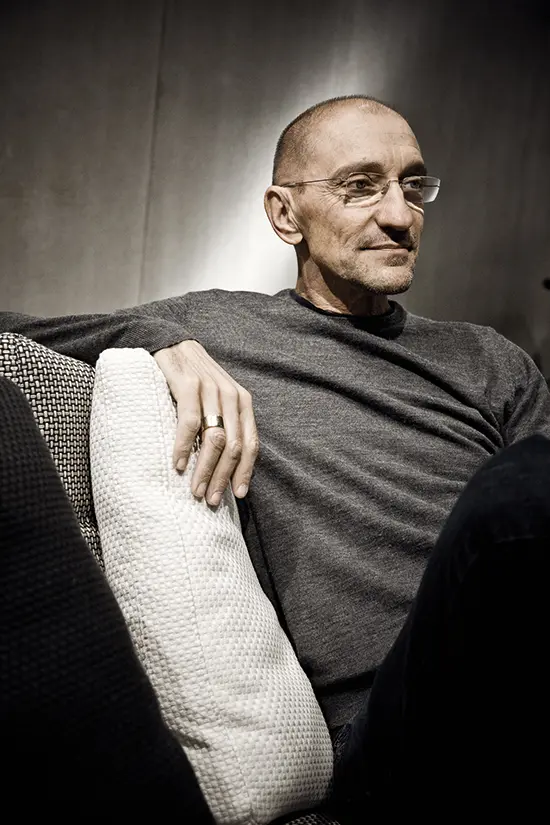
Rodolfo Dordoni, ph credit Federico Cedrone
I’m sceptical – not to mention underinformed – about the virtual world … I don’t know what it means: being a rational person, I’m not curious about this mutation that attributes value to non-existent things.
I think the metaverse is yet another attempt to satisfy curiosity, vanity and all the characteristics of the human soul. What is important is managing to keep stimulation and curiosity sharp. I believe that being an art director will consist of containing the exuberance that can fuel these sorts of habits, preserving the solidity of our everyday lives.
(It’s like chefs in a kitchen … “froth” is all very well, but I am hungry! Your real hunger has not been assuaged. Therefore: learn to make froth, but make good, proper food too!)
I would like the role of art directors to include knowing how to pass on our tradition, our culture, our uniqueness and our identity. Without them we lose everything that makes us unique.
It might be finding – again – the synergy between experimentation, innovation, sensitisation and subjects that we abuse, such as sustainability, which has become a selling point. It should be an inbuilt concept, yet we use it as a label to get ourselves known.
Art directors are responsible for preserving the meaning of what we do, conserving it and passing it down for the future.
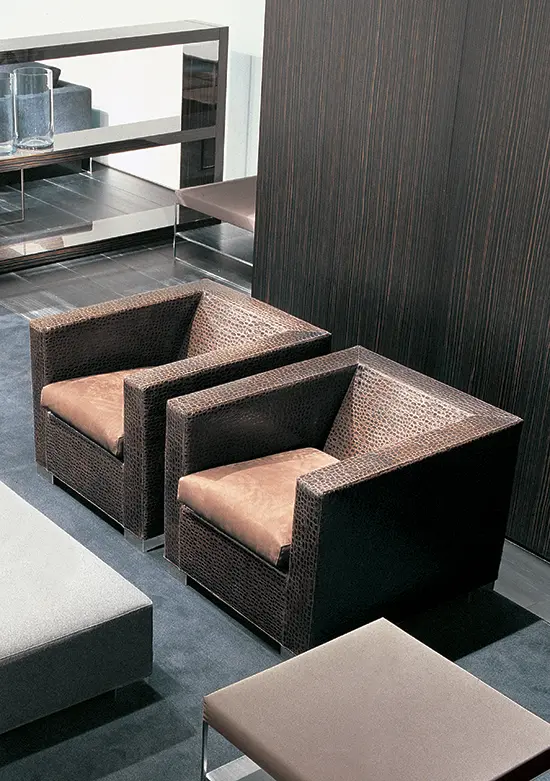
Suitcase armchair, Minotti, 1997. Photo courtesy


 Stories
Stories






